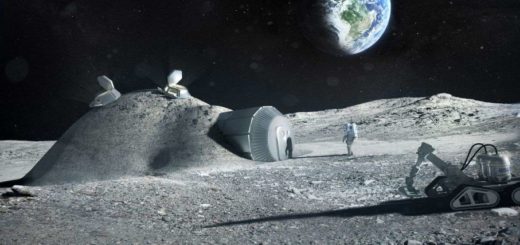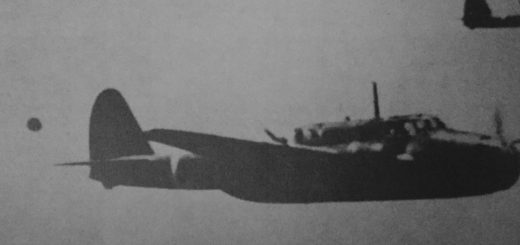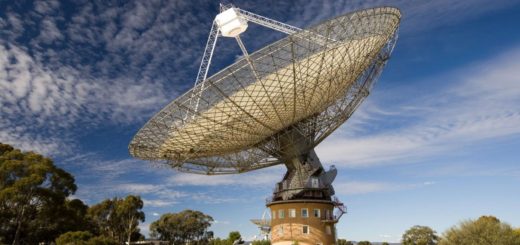These are the best astronomy images of 2021

The best astronomy photos of the year invite the eye upward and outward, bringing stunning views such as auroras above Earth and visions of a stellar nursery 554 light-years away.
These images, from the finalists in the 13th annual Royal Observatory Greenwich’s Astronomy Photographer of the Year competition, are a beautiful reminder of the size and age of the universe. One image, created by photographer James Rushforth, shows the comet NEOWISE passing over Stonehenge, a structure that didn’t even exist when the comet last streaked by Earth 6,800 years ago.
Held in cooperation with BBC Sky at Night magazine, the competition drew more than 4,500 entries from 75 different countries. Winners in 12 categories will be announced on Sept. 16, 2021, and the winning photographs will be exhibited in the National Maritime Museum in London. Here are the shortlisted competitors.
A Daytime Transit
astronomy photographer of the year a daytime transit
(Image credit: Andrew McCarthy)
The International Space Station travels across a waning crescent moon in this daylight shot. Photographer Andrew McCarthy of Elk Grove, California, used two cameras and two telescopes to capture the images, which he then blended together into a seamless scene.
(For the monochrome image: McCarthy used a Celestron EdgeHD800 telescope at f/10, Hobym Traveller mount, ZWO ASI174MM camera, 1,000 x 1-millisecond exposure. And for the color, he chose the Orion XT10 telescope at f/10, Hobym Traveller mount, Sony A7II camera, ISO 200, 1-millisecond exposure.)
Aurora in Murmansk
astronomy photographer of the year aurora in murmansk
(Image credit: Vitaliy Novikov)
The aurora borealis outshines the lights of Murmansk, Russia, in this photograph taken in January 2020. Photographer Vitaliy Novikov had to wait for a strong solar flare so that the aurora was visible despite the city lights.
(To capture the skylights, Novikov used a Nikon D850 camera, 24 mm f/5.6 lens, ISO 1000, 0.8-second exposure.)
Bicolor Veil Nebula
astronomy photographer of the year bicolour veil nebula
(Image credit: Péter Feltóti)
This image was stitched together from shots taken of the Veil Nebula in June, July and August 2020. The nebula is the remnant of a giant supernova explosion — the death throes of a massive star. The image was snapped from Pest County, Hungary.
(The photographer used a SkyWatcher 200/800 Newton Astrograph telescope at f/4.6, Astronomik Ha and OIII filters, SkyWatcher NEQ6 Pro mount, Moravian G3-16200 Mark II camera, Ha-OIII composite, 12 hours total exposure.)
Château de Chambord
astronomy photographer of the year Château de Chambord
(Image credit: Benjamin Barakat)
This chateau in Centre-Val de Loire, France, was a photographer’s dream and a challenge for Benjamin Barakat of the U.K., who had to snap photographs during minute-long pauses in the castle’s lighting, which occurred once every 15 minutes.
(Baraket used the following equipment: Sigma Art 40 mm telescope, iOptron SkyTracker Pro mount, Canon 6D Baader modified camera. For the foreground, Baraket used a 40 mm f/2.8 lens, ISO 3200, 4 x 30-second exposures; and for the sky, he used a 40 mm f/2 lens, ISO 1600, 8 x 30-second exposures.)
Comet Neowise over Stonehenge
astronomy photographer of the year comet neowise over stonehenge
(Image credit: James Rushforth)
Stonehenge didn’t exist 6,800 years ago, the last time the comet NEOWISE passed by Earth. This stunning shot, captured by James Rushforth of the U.K., hints at the incredible changes our planet has seen since the astronomical phenomenon last occurred. An orange glow emanates from the villages of Durrington and Larkhill, and a passing truck’s lights illuminate the stones.
(Equipment: Nikon D850 camera, 70–200 mm lens at 100 mm f/2.8, ISO 5000, 4-second exposure)
Dolphin Head Nebula
astronomy photographer of the year dolphin head nebula
(Image credit: Yovin Yahathugoda)
The Dolphin Head Nebula sits in the middle of the constellation Canis Major. Yovin Yahathugoda, of Sri Lanka, captured this shot with the help of the Telescope Live remote telescope in Chile. The gorgeous result represents 90 minutes of exposure time spread over three nights of uncooperative weather.
(Yahathugoda used the ASA 500N telescope at f/3.8, Astrodon filters, ASA DDM85 Premium mount, FLI PL16803 camera, Ha-OIII composite, 1.5 hours total exposure.)
Dugi Otok – Variant A
astronomy photographer of the year dugi otok variant a
(Image credit: Ivan Vucetic)
Star trails reveal the rotation of Earth in this shot taken over Dugi Otok in Croatia. The stars reflected in the water were added in post-production because winds over the water prevented the photographer, Ivan Vucetic, from capturing the real-life reflection of the stars.
(Vucetic used a Nikon D600 camera, 20 mm f/2.8 lens, ISO 1600. The foreground required a 526-second exposure, and the sky 247 x 25-seconds.)
Glory of Damavand and Milky Way
astronomy photographer of the year glory of damavand and milky way
(Image credit: Masoud Ghadiri)
The Milky Way shines over Mount Damavand, Iran, in this shot from May 2020. To capture this image, Masoud Ghadiri took a seven-hour hike to get into position. The photo contains 10 stacked images, five for the sky and five for the foreground.
(Ghadiri used Nikon D850 camera, Vixen Polarie mount, 24 mm f/4 lens, ISO 6400, 10 x 30-second exposures.)



 Creators of mankind
Creators of mankind Description of “Tall white aliens”
Description of “Tall white aliens” Where they came from?
Where they came from? About hostile civilizations
About hostile civilizations The war for the Earth
The war for the Earth “Tall white aliens” about eternal life
“Tall white aliens” about eternal life Video: “Nordic aliens”
Video: “Nordic aliens” Aliens
Aliens Alien encounters
Alien encounters The aliens base
The aliens base UFO
UFO Technology UFO
Technology UFO Underground civilization
Underground civilization Ancient alien artifacts
Ancient alien artifacts Military and UFO
Military and UFO Mysteries and hypotheses
Mysteries and hypotheses Scientific facts
Scientific facts


















